The 2nd shift is necessary but not enough
Do you think the candidate with the most votes in the 1st round should be elected?
Or that the 2nd shift is unnecessary?
So, the truth is that the 2nd round is necessary, but it is not enough to determine who is the candidate with greater preference. This is a problem that can be seen as a variation on the mathematical problem known as “stable marriages”.
In the problem of stable marriages we have a set of type A individuals who are mutually interested in another set of type B individuals. Let’s say we have 4 individuals in each set.
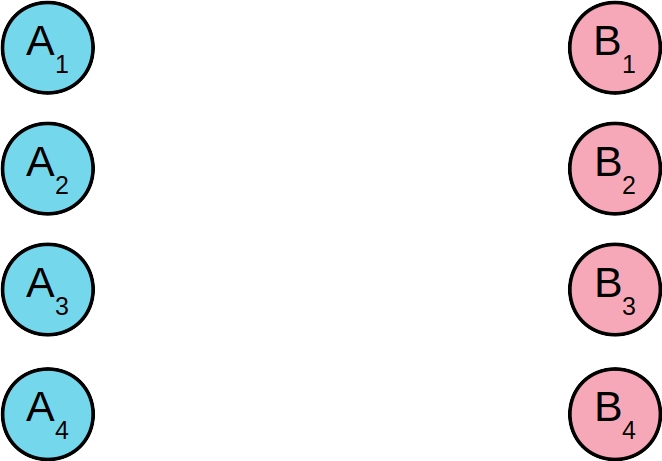
There will be instability in marriage whenever it is possible for any member of a couple to change their current partner for an option they consider better. For example, suppose A1 is with B1, and A2 is with B2.
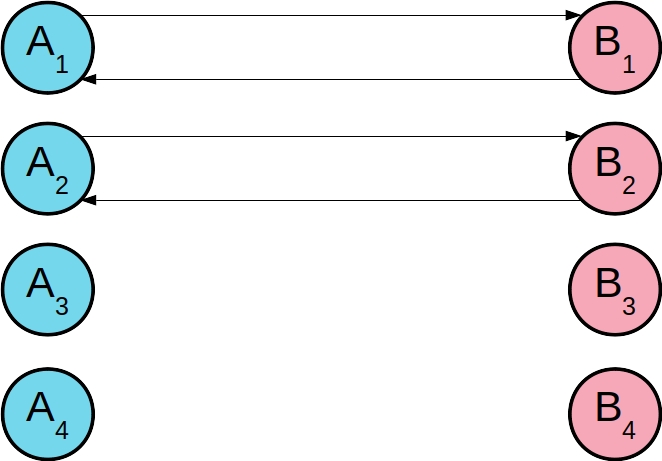
If A1 would rather be with B2 than B1, and B2 would rather be with A1 than A2, then A1 will split from B1 to be with B2, and B2 will split with A2 to be with A1.
On the other hand, if A1 would rather be with B2 than B1, but B2 would rather be with A2 than A1, then A1 will not leave B1, as he knows that B2 will not leave A2 to be with A1 . This is a situation in which A1 settles for its current option, since B2 has no interest in exchanging its current option for A1.
In this situation, where we have 4 individuals on each side, the solution to form stable marriages is to identify which are the best possible options for each side. Because that way, no couple will break up, because they know they won’t get anything better than they’ve already conquered.
To make this arrangement, an alternative is for each of the individuals to determine their order of preference for the individuals of the other set. Let’s say these choices were made, and we got the following preference orders.
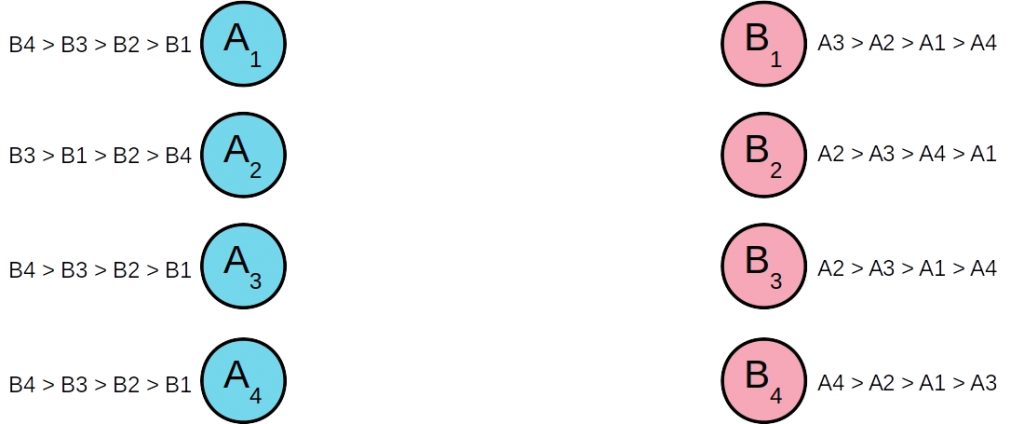
The first step is to look for individuals who form couples, each being the other’s first choice. Let’s see, A1, A3 and A4 prefer B4. But B4 prefers A4, so we have a couple that forms as the first option on both sides.
[A4, B4] is a stable marriage because it’s not worth it for either side to change their option for another, since they got what they think is their best option. The other individuals know that A4 and B4 are stable, so they will not exchange for any of the others. We can thus discard A4 and B4 from the options.
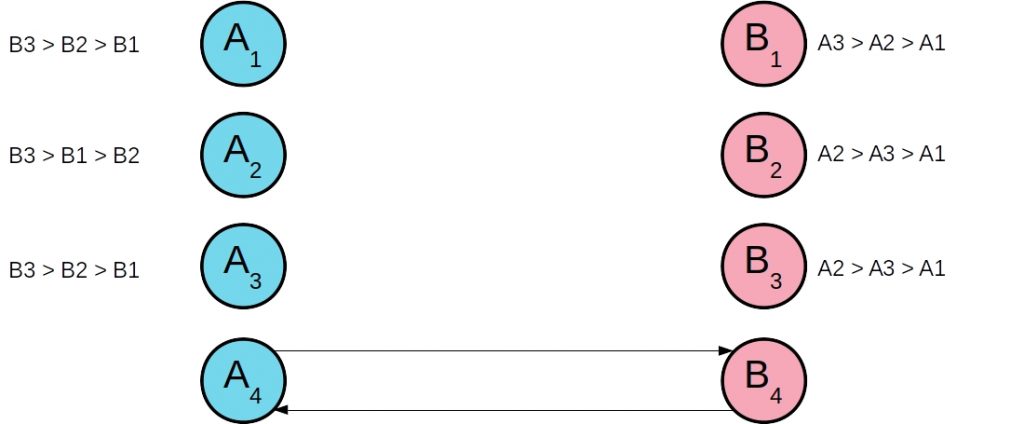
Now the first option of A1, A2 and A3 is B3. But B3 prefers A2, so we have a couple that forms as the first option on both sides.
[A2, B3] is a stable marriage because it’s not worth it for either side to change their option for another, since they got what they think is their best option. The other individuals know that A2 and B3 are stable, so they will not exchange for any of the others. We can thus discard A2 and B3 from the options.
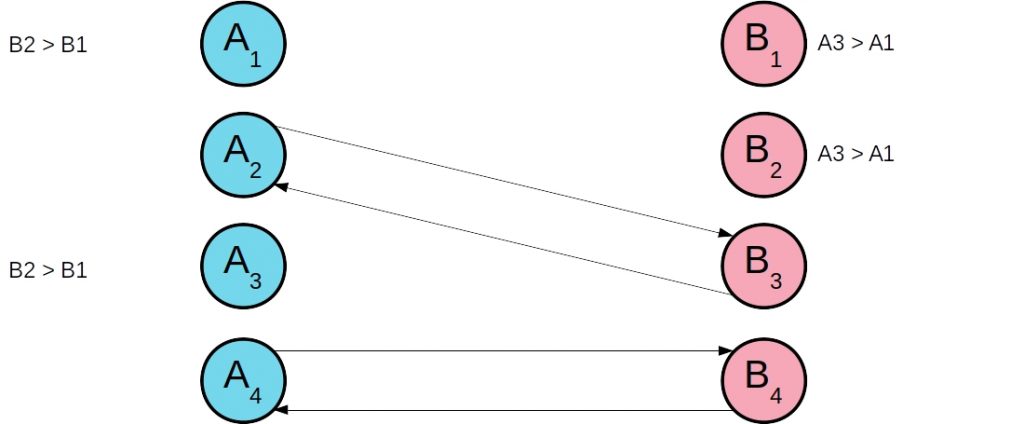
Now the first option of A1 and A3 is B2. But B2 prefers A3, so we have a couple that forms as the first option on both sides.
[A3, B2] is a stable marriage because it is not worth it for either side to change their option for another, since they have achieved what they consider to be their best option. The other individuals know that A3 and B2 are stable, so they will not exchange for any of the others. We can thus discard A3 and B2 from the options.
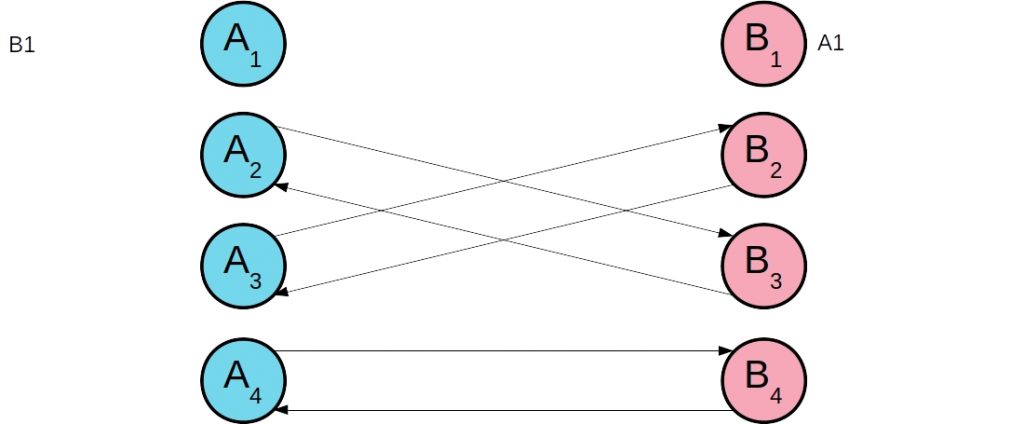
Only A1 and B2 remain, each one will be their best option, so they also form a stable marriage, as they will not be able to change their choices for a better one. And with that, all subjects got married in a stable way, that is, there will be no exchanges, as each one has the best option they could get.
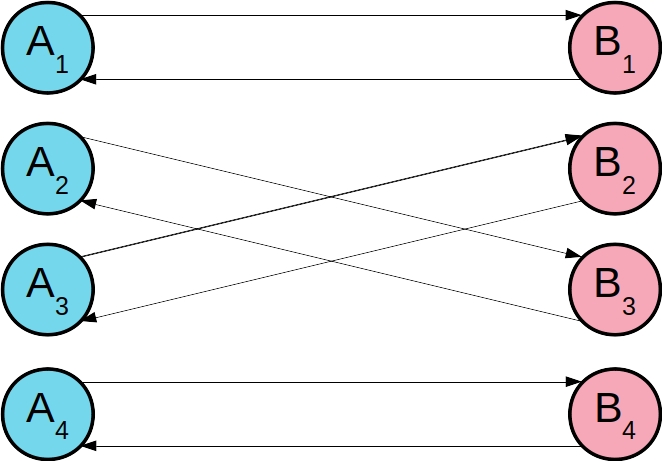
But what does this have to do with the 2nd round being necessary?
So, in elections we choose only one candidate as our main option. Suppose for example that there are candidates A, B and C and 12 voters.
- Candidate A received 5 votes
- Candidate B received 4 votes
- Candidate C received 3 votes
Which candidate is preferred by voters?
It may seem like A, but let’s see that 3 options were given, and less than half of the voters voted for option A. We don’t know if those who voted for C would prefer to elect A or B. That’s why we reduced the number of choices, which before were 3, now to 2, and we are going to do the voting again, now only between A and B.
- Candidate A received 7 votes
- Candidate B received 5 votes
This time, we know of those who had voted for C, 2 would prefer A over B, and 1 would prefer B over A. So we have that the majority prefers A.
But why is the 2nd shift not enough?
In the situation of 3 candidates (A, B, C) the 2nd shift is enough, but in the situation of 4 candidates or more, we would need to carry out more shifts, one to reduce each candidate. For example, we now have candidates A, B, C, and D, and 100 voters.
- Candidate A received 32 votes
- Candidate B received 30 votes
- Candidate C received 25 votes
- Candidate D received 13 votes
In this case, if we discard the candidate with the fewest votes in the 1st round, we eliminate D. And then we force D voters to choose their 2nd preferred candidate. Suppose these 10 of them vote for candidate C, 2 vote for B and 1 vote for A, now we have:
- Candidate A received 33 votes
- Candidate B received 32 votes
- Candidate C received 35 votes
This time the candidate with the fewest votes is B. But we still don’t know if, in the absence of candidate B, what would be the choice of these 32 voters. So a 3rd round would be necessary, this time without candidate B, and we would then see how these 32 votes are distributed between candidates A and C.
In general, there would need to be N-1 shifts where N is the number of candidates to be chosen. Or, it would be necessary that on voting day we choose our order of preference among the N candidates, and thus it would not even be necessary for a 2nd round, as we would be able to determine which is the candidate that represents the preference of the majority of the electorate.
What did you think of this text?
Write in the comments and let’s build a dialogue with respect to all.
Cover image credits to https://www.justicaeleitoral.jus.br/

